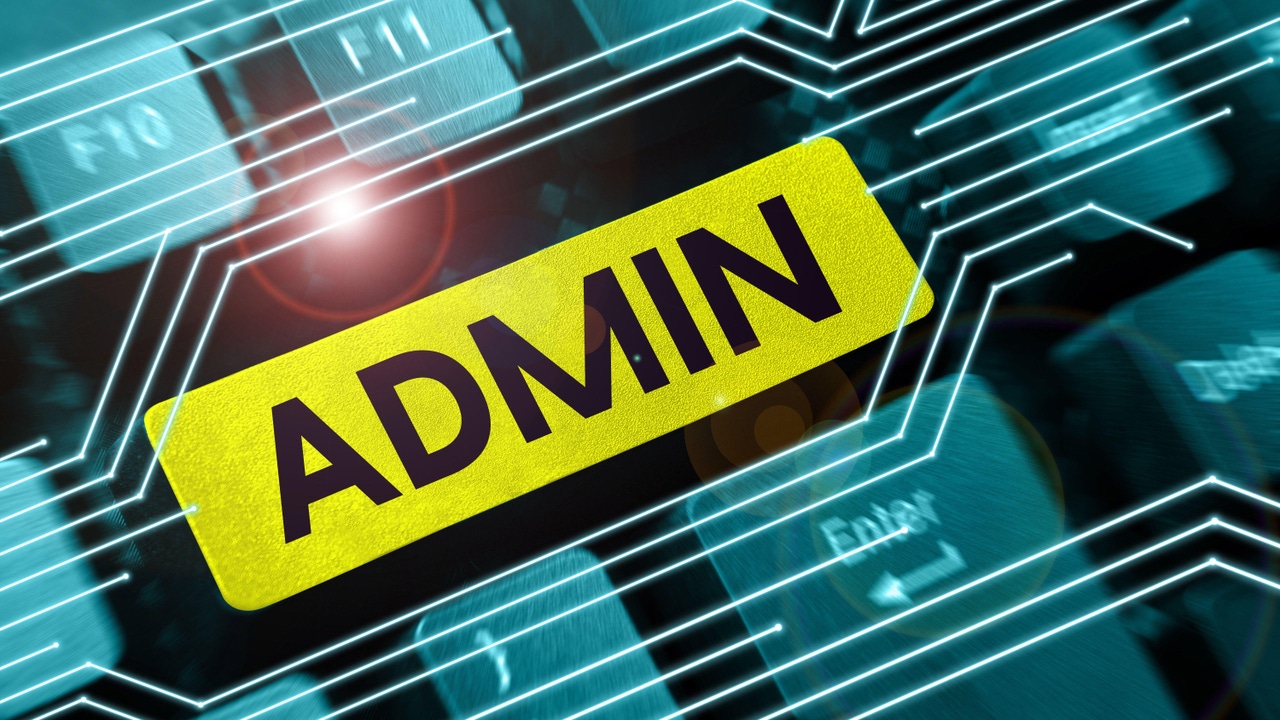The role of an admin is crucial in any organization. Admins handle multiple tasks to keep operations running smoothly.
In today’s fast-paced work environment, an admin is the backbone of a company. They manage everything from scheduling meetings to handling correspondence. The responsibilities are diverse, making their role both challenging and rewarding. With effective admins, companies can operate efficiently and stay organized.
Admins also act as the first point of contact for clients and employees. This makes their communication skills invaluable. Understanding the full scope of an admin’s duties can help businesses appreciate their importance. Whether you’re an aspiring admin or a business owner, knowing what admins do can enhance workplace productivity. Let’s explore the key aspects of an admin’s role in the modern workplace.

Credit: www.darkreading.com
Importance Of Admin Efficiency
Admin efficiency plays a crucial role in the smooth running of any business. Efficient administrative processes streamline operations, enhance productivity, and cut costs. These aspects are vital for the success and growth of a company. Understanding the importance of admin efficiency can help businesses thrive in a competitive market.
Impact On Productivity
Efficient admin tasks directly impact overall productivity. When admin work is organized, employees have more time. They can focus on core tasks. This leads to better performance. Reduced admin errors also mean fewer disruptions. This creates a smoother workflow. The result is a more productive and motivated team. Happy employees lead to better outcomes.
Cost Reduction
Admin efficiency can significantly lower costs. Streamlined processes reduce the need for extra resources. This includes both time and money. Automated systems minimize manual labor. This cuts down on payroll expenses. Efficient admin work also reduces errors. This prevents costly mistakes. The savings can then be invested in other areas. This boosts overall business growth.
Time Management Techniques
Managing time efficiently is crucial for administrators. With numerous tasks and responsibilities, using effective time management techniques can boost productivity and reduce stress. Let’s explore some key strategies that can help.
Prioritizing Tasks
Identify the most important tasks first. Start by listing all tasks. Categorize them based on urgency and importance. Focus on high-priority tasks early in the day. Break down large tasks into smaller, manageable steps. This approach prevents feeling overwhelmed.
Using Calendars Effectively
Leverage digital calendars for better organization. Schedule tasks, meetings, and deadlines. Set reminders for important events. Color-code different types of tasks to visualize your schedule. Review your calendar daily. Adjust plans if needed.
Streamlining Communication
Efficient communication is the backbone of any successful administration. By streamlining communication, you can save time, reduce misunderstandings, and boost overall productivity. Let’s dive into two key areas where you can make a real difference: optimizing email and meeting management.
Optimizing Email
Emails can quickly become overwhelming if not managed properly. Here are some practical tips to help you streamline your email communication:
- Use Filters and Folders: Automatically sort incoming emails into relevant folders. This helps you focus on what’s important without getting lost in the clutter.
- Set Specific Times: Check your email at specific times during the day instead of constantly monitoring it. This reduces distractions and helps you stay focused.
- Template Responses: Create templates for common responses. This can save you a lot of time and ensure consistency in your communication.
- Clear Subject Lines: Use clear and descriptive subject lines to make it easier for recipients to understand the purpose of your email at a glance.
Imagine having an empty inbox at the end of each day. How much more efficient would you feel?
Meeting Management
Meetings are essential, but they can also be time-consuming. Here’s how you can manage them more effectively:
- Set Agendas: Always have a clear agenda. This keeps meetings focused and prevents them from going off track.
- Time Limits: Set specific time limits for each agenda item. This helps ensure that all points are covered without dragging the meeting unnecessarily.
- Action Items: End each meeting with a list of action items. Assign responsibilities and deadlines to make sure tasks are followed up.
- Use Technology: Utilize tools like video conferencing and collaborative platforms to make meetings more accessible and productive.
Have you ever left a meeting feeling it could have been an email? By implementing these strategies, you can make your meetings more effective and less frequent.
Incorporating these practices into your daily routine can significantly enhance your administrative efficiency. Why not give them a try and see the difference for yourself?
Automating Routine Tasks
Automating routine tasks in admin work boosts efficiency. It reduces errors and saves valuable time. This allows focus on more important activities.
Automating routine tasks can save time and reduce errors. Admin professionals often juggle multiple responsibilities daily. Automating repetitive tasks allows them to focus on more strategic activities. This blog post explores how software solutions and workflow automation can help.Software Solutions
Various software solutions can automate admin tasks. These tools handle scheduling, data entry, and reminders. They can also manage emails and customer communications. Using these tools can streamline daily operations. This leads to increased productivity and better time management. Examples of such software include project management tools. They help in planning and tracking tasks. Another example is CRM software. It manages customer interactions and sales data. These tools can significantly reduce the workload.Workflow Automation
Workflow automation refers to the use of technology to perform tasks. It creates a series of automated actions. This ensures tasks are completed efficiently. Tools like Zapier and Microsoft Power Automate are popular. These tools connect different applications. They can trigger actions based on specific events. For example, automatically send an email when a form is submitted. This reduces the need for manual intervention. Workflow automation can also improve accuracy. Automated processes are less prone to errors. This ensures that tasks are completed correctly. Admin professionals can rely on these automated workflows. This allows them to focus on more important tasks.Delegation Skills
Effective delegation skills are vital for admin professionals. These skills help distribute tasks, ensuring efficient workflow and productivity. Clear communication and trust in team members are key.
Delegation Skills are a vital part of effective administration. As an administrator, you cannot do everything on your own, and that’s okay. The art of delegation ensures that tasks are completed efficiently, leveraging the strengths of your team. Let’s dive into two critical aspects of delegation skills: Identifying Delegable Tasks and Effective Supervision.Identifying Delegable Tasks
To delegate effectively, you need to start by identifying which tasks can be delegated. Not every task should leave your desk. Consider the following criteria:- Importance: Determine if the task is critical to your role. If it’s a core responsibility, it might be best to handle it yourself.
- Skill Level: Assess if the task requires specialized skills. If a team member has those skills or can learn them quickly, delegate it.
- Frequency: Routine and repetitive tasks are ideal for delegation. This frees up your time for strategic planning.
- Development: Consider tasks that can help team members grow. Delegating such tasks can be a great way to enhance their skills.
Effective Supervision
Delegation does not mean abdication. You must supervise the tasks you delegate to ensure they meet your standards. Here’s how:- Set Clear Expectations: Be specific about what needs to be done and the desired outcome. Ambiguity leads to confusion and errors.
- Provide Resources: Ensure your team has the tools, time, and training needed to complete the task. Support them whenever required.
- Regular Check-ins: Schedule brief, regular meetings to discuss progress and address any issues. This keeps the task on track and shows your involvement.
- Offer Feedback: Constructive feedback is crucial. Praise what’s done well and gently correct what’s not. This helps in continuous improvement.
- Trust Your Team: Micromanaging can demotivate your team. Trust their abilities, which will boost their confidence and performance.
Organizational Tools
Organizational tools help manage tasks and projects efficiently. They reduce chaos and save time. Admin professionals rely on these tools for smooth workflow. Let’s explore two key types.
Document Management Systems
Document management systems (DMS) store and organize files digitally. They make file retrieval easy. DMS reduces paper usage and clutter. Popular DMS options include Google Drive and Dropbox. These platforms offer secure storage and sharing. You can set permissions for file access. This ensures only the right people see sensitive information. A good DMS supports version control. This keeps track of document changes over time.
Digital Collaboration Platforms
Digital collaboration platforms connect team members. They help in sharing ideas and updates. Tools like Slack and Microsoft Teams are widely used. These platforms offer chat, video calls, and file sharing. They keep everyone on the same page. You can create channels for different projects. This keeps discussions organized and focused. Notifications ensure you don’t miss important updates. These platforms also integrate with other tools. This enhances productivity and streamlines communication.
Performance Tracking
Performance tracking helps ensure an admin’s tasks are aligned with the goals of the organization. It provides a clear picture of progress, efficiency, and areas that need improvement. Measuring performance is essential for achieving success and maintaining productivity.
Key Performance Indicators
Key Performance Indicators (KPIs) are metrics that measure specific goals. They help in evaluating the effectiveness of an admin’s work. Common KPIs include task completion rate, response time, and accuracy. Tracking these metrics provides insight into performance and highlights where improvements are needed.
Regular Reviews
Regular reviews are crucial for ongoing performance tracking. They provide opportunities to discuss progress, address challenges, and set new goals. Conducting reviews on a weekly or monthly basis ensures that performance stays on track. These meetings can boost motivation and productivity.
Credit: play.google.com
Continuous Improvement
Continuous improvement in admin involves regularly assessing and refining processes to enhance efficiency. Small changes can lead to significant improvements in productivity and organization. Effective admin practices evolve through consistent evaluation and adaptation.
Continuous improvement is the backbone of effective administration. It involves regularly assessing and refining processes, tools, and skills to enhance efficiency and effectiveness. By focusing on continuous improvement, organizations can adapt to changing environments and stay ahead of the competition. Let’s delve into how feedback mechanisms and training programs play a crucial role in this ongoing journey.Feedback Mechanisms
Feedback is crucial for growth. In an administrative setting, it acts as a guiding light for improvement. Have you ever wondered why some organizations excel at adapting to change? They leverage feedback mechanisms effectively. Consider implementing anonymous surveys to gather honest opinions from employees. This can highlight areas that need attention and provide actionable insights. Regular one-on-one meetings are another excellent way to gather feedback. These personal interactions can uncover issues that might not surface in a group setting. Don’t forget about customer feedback. It can offer a fresh perspective on how administrative processes affect service delivery. Use tools like Net Promoter Score (NPS) to gauge customer satisfaction and identify areas for improvement. By actively seeking and acting on feedback, you can create a culture of continuous improvement that keeps everyone on their toes and committed to excellence.Training Programs
Training is another pillar of continuous improvement. It equips your team with the skills and knowledge they need to perform at their best. Develop customized training programs tailored to the specific needs of your organization. Generic training can be helpful, but it won’t address your unique challenges. For instance, if your team struggles with time management, offer specific workshops focusing on productivity tools and techniques. Interactive sessions with practical exercises can make a significant difference. On-the-job training is equally important. Encourage experienced employees to mentor newer team members. This not only helps in knowledge transfer but also strengthens team bonds. Consider e-learning platforms for flexible learning options. These platforms allow employees to learn at their own pace, fitting training into their busy schedules. Regularly update your training programs to keep up with the latest trends and technologies. This ensures your team remains competitive and can handle new challenges effectively. By investing in continuous training, you empower your team to improve consistently, leading to better performance and job satisfaction. — Continuous improvement is not a destination but a journey. By focusing on feedback mechanisms and training programs, you can foster a culture that values growth and excellence. How do you plan to implement these strategies in your organization?
Credit: www.vecteezy.com
Frequently Asked Questions
What Does Admin Mean?
Admin means a person responsible for managing and organizing tasks in an organization or system. This role includes overseeing operations, maintaining records, and ensuring smooth functionality.
What Is An Admin Role?
An admin role manages system settings, user access, and security. They ensure smooth operations, troubleshoot issues, and maintain data integrity.
What Is An Admin Job?
An admin job involves managing office tasks, organizing schedules, and supporting staff. Responsibilities include filing, answering phones, and coordinating meetings.
What Does An Admin Staff Do?
Admin staff handle office tasks, manage schedules, and support team operations. They organize files, answer calls, and coordinate meetings.
Conclusion
Understanding the role of admin is crucial for any business. Effective administration ensures smooth operations and better productivity. Admins handle tasks that keep everything organized and efficient. A good admin improves communication within the team. This leads to better collaboration and faster problem-solving.
Investing in skilled admin staff can save time and resources. Prioritize hiring and training for these roles. Your business will benefit greatly from capable administrators. Remember, a strong admin team is the backbone of successful operations.
{ “@context”: “https://schema.org”, “@type”: “FAQPage”, “mainEntity”: [ { “@type”: “Question”, “name”: “What does admin mean?”, “acceptedAnswer”: { “@type”: “Answer”, “text”: “Admin means a person responsible for managing and organizing tasks in an organization or system. This role includes overseeing operations, maintaining records, and ensuring smooth functionality.” } } , { “@type”: “Question”, “name”: “What is an admin role?”, “acceptedAnswer”: { “@type”: “Answer”, “text”: “An admin role manages system settings, user access, and security. They ensure smooth operations, troubleshoot issues, and maintain data integrity.” } } , { “@type”: “Question”, “name”: “What is an admin job?”, “acceptedAnswer”: { “@type”: “Answer”, “text”: “An admin job involves managing office tasks, organizing schedules, and supporting staff. Responsibilities include filing, answering phones, and coordinating meetings.” } } , { “@type”: “Question”, “name”: “What does an admin staff do?”, “acceptedAnswer”: { “@type”: “Answer”, “text”: “Admin staff handle office tasks, manage schedules, and support team operations. They organize files, answer calls, and coordinate meetings.” } } ] }





